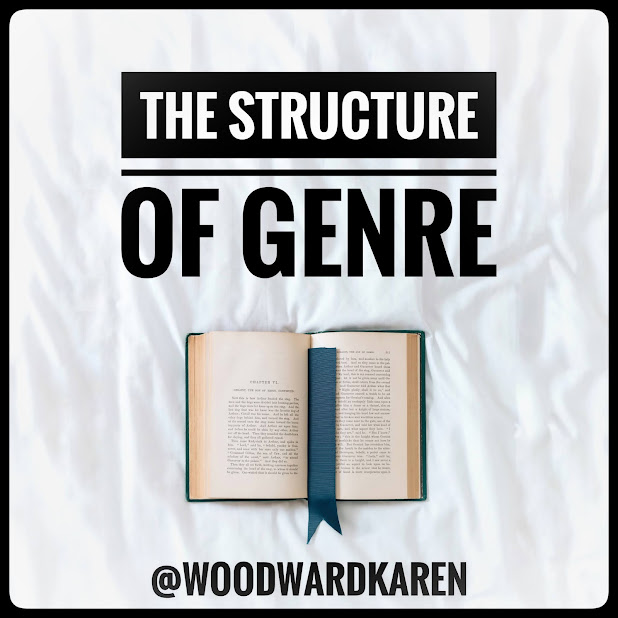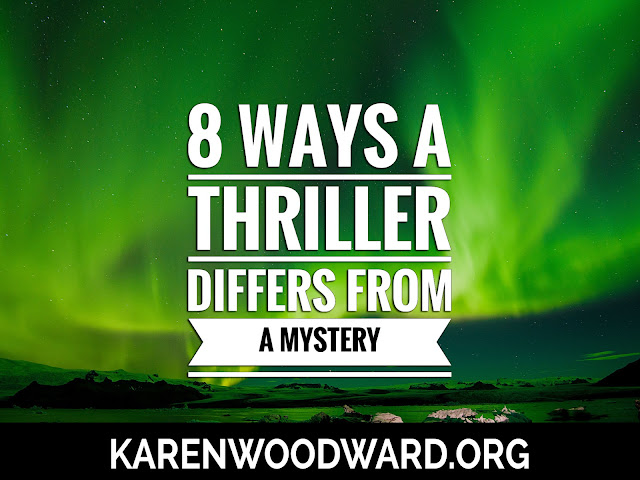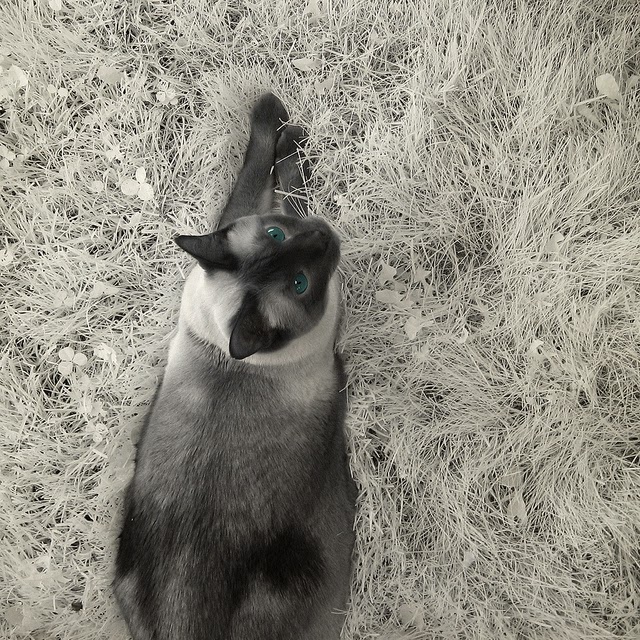I’ve discussed the
structure of a CYOA story, the
structure of a mystery, the
structure of a short story, even the
structure of a great story, but never the structure of a thriller. I think it’s high time to remedy that!
But how to write a thriller is a rather large subject, so in what follows I only look at 8 ways a thriller differs from other kinds of stories.
Thriller: Mystery, Crime, Suspense and Horror
Thrillers have a bit of everything: mystery, suspense, crime and horror. Perhaps that’s the secret of their popularity, there’s something for everyone.
“Thrillers are characterized and defined by the moods they elicit, giving viewers heightened feelings of suspense, excitement, surprise, anticipation and anxiety. Successful examples of thrillers are the films of Alfred Hitchcock.” (
Wikipedia)
In a word, thrillers are supposed to be
thrilling!
8 Ways in which a thriller differs from other books:
1. Pacing: A thriller is relentless.
I’ve found that certain genres—cozy’s for instance—don’t require a huge amount of dramatic tension or, as I like to call it,
narrative drive. Speaking for myself, I read cozy mysteries for the sense of community, to see the characters’ quirks and how they complicate things. To see a) WHO did it, b) HOW they did it and c) WHY they did it. Thrillers, though, I read primarily because I want to lose myself in a fast paced story that fires up the imagination.
2. There is no obvious set of suspects.
One of the things that distinguishes a thriller from a cozy is that a thriller doesn’t have a clear list of suspects.
Recall that in a cozy mystery the suspects are drawn from what W.H. Auden calls a “
closed society” so we have our pool of suspects right from the beginning. The reader’s task is to work out which of them committed the dastardly deed. For example, a freak snow storm traps 9 people in a remote hunting lodge. Logically, the killer has to be one of the surviving 8 people.
In a thriller, though, the killer can be someone completely unconnected to the detective and her allies. For example in Thomas Harris’ novel
Silence of the Lambs Jame Gumb, the serial killer and
Big Bad, was never directly connected to the investigation. (Dr. Hannibal Lecter WAS, but Lector wasn’t the antagonist.)
That said, many times the murderer has some sort of connection to the detective. For example, it might turn out that the killer is someone inside the detective’s inner circle, or perhaps one of the apparently minor characters involved in the case—the detective’s mail carrier, the barista that serves the detective coffee each day, his sister’s new boyfriend, and so on. For example, in James Patterson’s thriller,
Along Came a Spider, one of the killers was part of the hero’s own team.
3. High stakes.
In a cozy the stakes are usually modest. If the detective doesn’t solve the case then the murderer will go unpunished and the imbalance the murder created in society will not be addressed. As a result, people will be more suspicious of each other, each thinking that the other could be a murderer. Also, the sleuth’s reputation would take a considerable hit.
In a thriller, on the other hand, if the murderer isn’t caught it could mean the end of the world.
4. Protagonist is a hero.
Not all protagonists are heroes. A hero is someone—male or female—who has noble qualities. For instance, they are courageous and think of the well-being of others before their own. They will do what many would consider irrational things to defeat the Big Bad and save the day.
Generally, whatever organization the hero is with he is cut off from. He is the rebel police officer, the journalist who skates too close to the edge, the soldier who would do anything, sacrifice anything, to save the day.
5. Antagonist is a proper villain.
Another difference between a thriller and a cozy is that in a thriller the murderer is more likely to be a vicious, brilliant, psychotic, serial killer than he is a weaselly nephew who murders his cousin for their money.
Or, if we’re talking about a political thriller, the villain is much more likely to be a terrorist out to destroy the free world than someone who kills in a moment of passion or because he wants to stop his most intimate secret from being revealed.
6. A lot of scenes, not many sequels. What sequels exit are short.
I mentioned that thrillers were part action story and here is one reason why: sequences of scenes are strung together with only very short sequels between them. I know I use this example quite a bit—perhaps too much!—but
Raiders of the Lost Ark is a terrific example of scene vs sequel length.
There are sequels in
Raiders, but they are very short. One sequel was about 5 seconds long, just long enough for Indiana Jones to say something like, “We’ve got to get the ark,” and then he and Marion are off to fight another battle.
Let’s face it, folks don’t read thrillers because they want something to help them fall asleep! They read them for, as the name suggests, a
thrill.
For more on scenes and sequels see the article
Scenes, Sequels, Sequences and Acts.
7. The setting of a thriller is often exotic.
Exotic locations are unfamiliar, extreme, locations.
Unfamiliar. For someone from the Pacific Northwest, a tropical beach would be an exotic location, but if you lived in Hawaii then not so much!
Extreme. The world's largest particle collider would be an exotic location. As could a spacecraft orbiting Earth ... or Mars!
A Carnival is often used as an exotic location, especially if the thriller has supernatural overtones.
This is another point of departure from the cozy mystery which is often—and quite intentionally—placed within a familiar, comfortable, cozy setting.
8. An exciting, surprising, climax.
Every reader of a cozy knows what the climax is going to be: the detective is going to go over every clue and separate the true clues from the distractors and red herrings. (Distractors are those clues that have to do with wrongdoing, but wrongdoing that has nothing to do with the murder.)
While the climax of a thriller needs to reveal the identity of the murderer (the
who, the
why and the
how) there also needs to be a twist. For instance, a classic twist comes at the end of the movie
Seven when the penultimate victim is revealed to be the detective’s wife. This leads to the further twist of the Big Bad himself being the ultimate victim, killed by the detective himself.
Every post I pick something I love and recommend it. This serves two purposes. I want to share what I’ve loved with you, and, if you click the link and buy anything over at Amazon within the next 24 hours, Amazon puts a few cents in my tip jar at no cost to you. So, if you click the link, thank you! If not, that’s okay too. I’m thrilled and honored you’ve visited my blog and read my post.
Today I’m going to recommend something a bit different:
Dragon NaturallySpeaking Home 13.0. I’ve tried it out and I have to say I’m VERY impressed. The program seems to understand 98% of what I say perfectly. Unfortunately, the 2% that Dragon misunderstands can be frustrating!
bottom line: If you’re a slow typist or you hate typing, and you don’t mind fixing the odd mistake, this program is for you. (Here’s a review of the program:
PC World.)
That’s it! I’ll talk to you again on Wednesday. Until then, good writing! :-)





